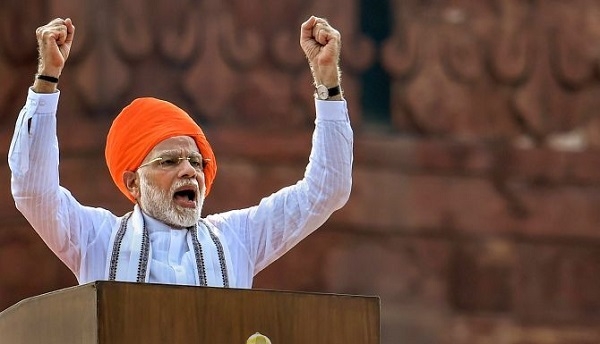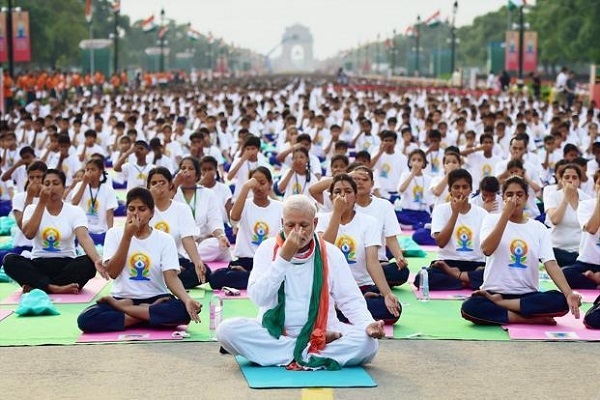PM Modi's the leader we need the most to fight Covid 19
Total Views |
- Himali Nalawade
Indian social media had trolled PM Modi for appearing on social platforms during the pandemic and asking the people to observe strict lockdowns with the weirdest of things to do at home which were perceived to have nothing to do with the Pandemic. It was blamed on the Prime Minister that he made people do irrelevant things in the lockdown which were not at all fruitful. But was it really so or there's more to the picture than it is observed? Will the Prime Minister of the world's largest democracy officially ask the people to do random things or was there a precise thought behind his planned public appearances on virtual platforms? And if there was a strategy behind this then what was it? Let us find out the thought which directed PM Modi's strategy to fight the pandemic and you will only be thankful to his wise plan which he continued to execute in spite of the opposing speculations that were made with complete absence of insights.

Every day there's a crying announcement of the rising numbers of corona patients on news channels, few channels also display the improving recovery rate along with these numbers but no one shows the picture in regard of the number of people residing in the country. When we bring the existing population in the picture, the whole calculations are revised and for a change, you may also end up appreciating the way India is tackling the Covid situation. And this is not a vague statement, this is what a Cambridge University based research has concluded after rigorous study of various aspects of the public policies that the Indian government has adopted against Covid 19.
Ramit Debnath and Dr Ronita Bardhan from Behaviour and Building Performance group of Cambridge University's Department of Architecture have carried out a systematic study to investigate how the Indian government formed reactive policies to fight the pandemic across various policy sectors. This study was emphasized on the application of the 'Nudge theory' which was initiated by the government to tackle challenges put forth by the pandemic. The theory was not only aimed at influencing the common masses but also the functioning of government employees, scientists, health professionals, manufacturers, food suppliers as well as students.
India is home to almost 135.26 crores of people living in much densely populated environments at many places. Therefore the principle of 'Social distancing' was a huge task to perform in India, but was the only known practice at the initial phase to fight the pandemic. A leader had to be responsible for the systematic execution of the practice and PM Narendra Modi emerged as the responsible face during this while. Ramit Debnath has said in his research, “Nudge-based policy approaches are crucial in a democratic country like India which has a vast population and geo-spatial divide, high levels of illiteracy and an extremely vulnerable health system.”
What is the nudge theory? Nudge is basically a concept which proposes positive bolstering and indirect implications to influence the behaviour and decision making of groups and individuals. According to the study, the government deployed nudge techniques to tackle a wide range of urgent challenges between 15 January and 14 April 2020, which was the initial phase of the lockdown. And this nudging was initiated by PM Narendra Modi's timely public appearance on virtual platforms. Just as the theory suggests, PM Modi through these appearances attempted to influence the behaviour of crores of Indians towards observing social distancing and maintaining public hygiene.
PM Modi on March 24, told the nation that “The period of 21 days is critical to break the infection cycle, or else the country and your family could be set back 21 years” and the immediate next day India witnessed the phase 1 of lockdown. Prior to lockdown, government had emphasized on the risks of travellers coming from China, by practicing medical screening of passengers at international airports. Later through nudging, people were discouraged to visit public places and be in crowds.
During the later phase of the lockdown, government tried to nudge the people about fake news and strictly follow the restrictions put on public gathering and public places. At every public appearance, PM Modi nudged the Indian masses about some different initiative that was on the priority of the government policies to fight back corona. It kept on advancing from telling the people to switch off the lights at night for a few hours, promoting the use of Arogya Setu app and spreading the message of fitness by trending #YOGAathome.

The whole situation can be summed up by one statement made by Dr Ronita Bardhan in her research. She has stated, “The government urgently needed to buy time and it had to bring a diverse population together to fight a common struggle – this was a huge challenge. Our findings show that the government needed much more than scientific data to convince people, they appealed to powerful values including patriotism, family, religion and community.” The government also harnessed nostalgia in order to make people stay at home, unknowingly, during lockdown by broadcasting old popular TV shows on the national channel, Doordarshan.
It was through such frequent nudges which were executed quite smartly, and the influencing effort was quite a times gone even unnoticed by the people, when Prime Minister Narendra Modi emerged as a leading face, influential enough, to make the people stay at home. This eased the process of social distancing and strict lockdowns in a complicated social environment like that of India's. It is vital to realize how PM Modi's regular appearance to address the vast Indian population was instrumental in fighting back the pandemic. The fact that Narendra Modi's influence as the Prime Minister among the Indian masses has been the root cause for the successful application of Nudge theory during lockdown is undeniable.
Read the research article :

